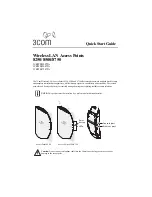
157
Step Command
Remarks
5.
Suppress the SA bit
during restart.
graceful-restart suppress-sa
Optional.
By default, the SA bit is not suppressed.
By enabling the GR Restarter to suppress the
Suppress-Advertisement (SA) bit in the hello
PDUs, the neighbors will still advertise their
adjacency with the GR Restarter.
Configuring IS-IS NSR
According to the GR feature, after a master/slave switchover, the GR Restarter obtains routing
information from its neighbors and the IS-IS process on the new master needs to learn all routes. If the
network topology has changed during the switchover period, removed routes cannot be updated to the
device, which may cause black hole routes.
NSR is introduced to solve the problem. It backs up IS-IS link state information from the master device to
the slave device. After a master/slave switchover, NSR can complete link state recovery and route
re-generation without requiring the cooperation of other devices.
The IS-IS NSR and IS-IS GR features are mutually exclusive.
To configure IS-IS NSR:
Step Command
Remarks
1.
Enter system view.
system-view
N/A
2.
Enter IS-IS view.
isis
[
process-id
] [
vpn-instance
vpn-instance-name
]
N/A
3.
Enable IS-IS NSR.
non-stop-routing
Disabled by default.
4.
Set the NSR interval.
non-stop-routing interval
interval-value
0 seconds by default, that is, no NSR interval
is configured.
Configuring IS-IS FRR
When a link fails, the packets on the path are discarded, or a routing loop occurs until IS-IS completes
the routing convergence based on the new network topology.
You can enable IS-IS fast reroute (FRR) to reduce traffic recovery time.
Figure 62
Network diagram for IS-IS FRR
, after you enable FRR on Router B, IS-IS automatically calculates or designates a backup next
hop when a link failure is detected. In this way, packets are directed to the backup next hop to reduce
















































